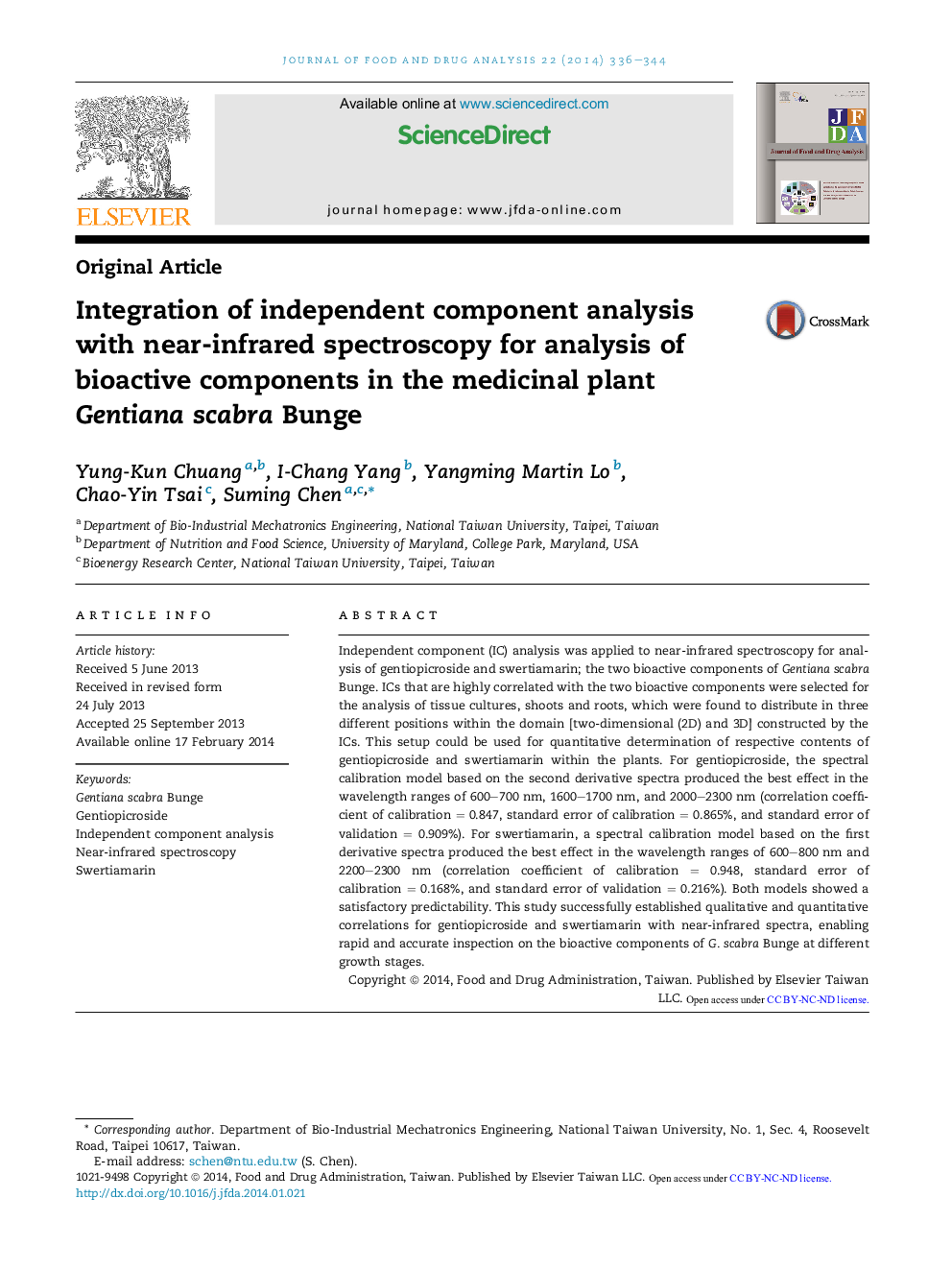| Article ID | Journal | Published Year | Pages | File Type |
|---|---|---|---|---|
| 2507475 | Journal of Food and Drug Analysis | 2014 | 9 Pages |
Independent component (IC) analysis was applied to near-infrared spectroscopy for analysis of gentiopicroside and swertiamarin; the two bioactive components of Gentiana scabra Bunge. ICs that are highly correlated with the two bioactive components were selected for the analysis of tissue cultures, shoots and roots, which were found to distribute in three different positions within the domain [two-dimensional (2D) and 3D] constructed by the ICs. This setup could be used for quantitative determination of respective contents of gentiopicroside and swertiamarin within the plants. For gentiopicroside, the spectral calibration model based on the second derivative spectra produced the best effect in the wavelength ranges of 600–700 nm, 1600–1700 nm, and 2000–2300 nm (correlation coefficient of calibration = 0.847, standard error of calibration = 0.865%, and standard error of validation = 0.909%). For swertiamarin, a spectral calibration model based on the first derivative spectra produced the best effect in the wavelength ranges of 600–800 nm and 2200–2300 nm (correlation coefficient of calibration = 0.948, standard error of calibration = 0.168%, and standard error of validation = 0.216%). Both models showed a satisfactory predictability. This study successfully established qualitative and quantitative correlations for gentiopicroside and swertiamarin with near-infrared spectra, enabling rapid and accurate inspection on the bioactive components of G. scabra Bunge at different growth stages.
